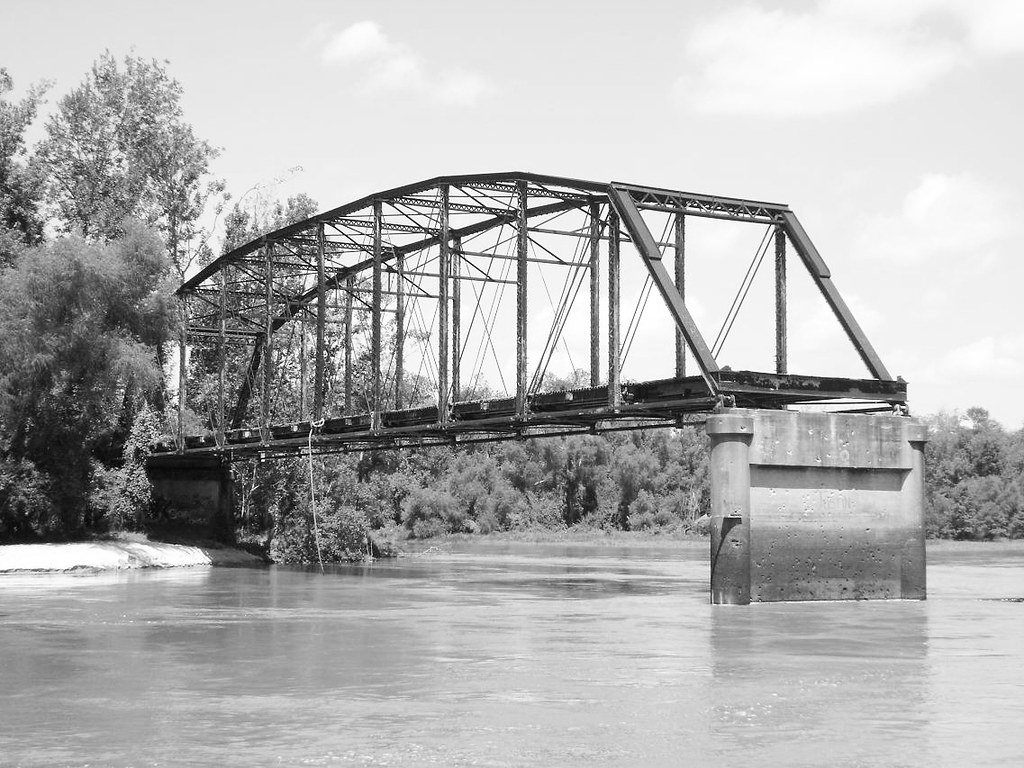Before the Neches River runs through Beaumont, on its way to Sabine Lake and then to the Gulf of Mexico, it runs through the small community of Evadale. That’s where a local boater named Bill Milner found something peculiar in the Neches last week: a shipwreck, exposed by the drought and drop in the river’s level, according to 12News in Southeast Texas.
Milner brought the boat to the attention of Ice House Museum in nearby Silsbee, which alerted Amy Borgens, who works for the Texas Historical Commission as the state’s marine archaeologist. Borgens joined the Texas Standard to discuss the find.
This transcript has been edited lightly for clarity:
Texas Standard: So what did you make of this report of a shipwreck on the Neches? Were you surprised?
Amy Borgens: I wasn’t surprised initially because we have so many shipwrecks in the Neches River, many that are undiscovered, but there’s dozens that have already been documented in the river. So when I received that report, it was really about learning the position of where that wreck was, to see if it was one that was already known to the agency.
And what do you think this shipwreck is of? Or do you have a strong hunch?
Yes, we know the shipwreck. Once we were provided the locational data for where it is, we were able to confirm it’s one of more than a dozen what are called World War I Emergency Fleet Corp vessels that were abandoned in the Neches River in the vicinity of Beaumont. So essentially, because of allied merchant vessel losses during the First World War, the government wanted to build a sort of a fleet of merchant ships to replace them. And this became a government contracted effort to kind of restore commerce.
So these boats that you describe, would they be running up and down the Neches during wartime, or would they be out in the Gulf of Mexico? Or where would they be used?
They would be out in the Gulf or Atlantic; you know, these would be for oceanic travel to conduct commerce with other nations. They were just built in shipyards all along rivers, and that’s why we’re seeing them there.
Can you describe this particular vessel? Is it what we think of as a typical merchant vessel, or is there anything in particular that stands out?
What makes them kind of special – and I think these were somewhat typical of the types of steamships that you would expect at the time – except they were made of wood. During wartime, often there were metal shortages, metal scarcity, and so they would rely on other construction materials. And so during World War I, you will see ships being made out of wood. And also we have some that were made out of concrete as well.
» GET MORE NEWS FROM AROUND THE STATE: Sign up for our weekly ‘Talk of Texas’ newsletter
So why would this boat, if it was sent out to be on the Atlantic, why would it why wind up in the Neches? What’s that about?
Well, the reason that you find these in the Neches is because when the war ended, the ships sort of lost their purpose. And it was really difficult for the government to find buyers for wooden hold ships at that time. And so these vessels, many of which were constructed at a cost of $250,000 each, some of these were sold for just $1,000, just for the salvage of wood and iron.
So, you know, you had these really unique large ships – these were about 282 feet long – again, just without without a purpose and without interest in buying them.
And did I understand you to say that these vessels were built in that area?
Yes, they were built in Beaumont. There were actually nine shipyards in Texas that were building these ships under government contracts, and five of these were in Beaumont. And part of the reason you see so many in Texas is because of the pine industry and the lumber.
So I’m curious, since water levels are low all over the state, what should folks do if, like Bill Milner, they see something they think may be a shipwreck or some other kind of artifact?
Well, first of all, they should not disturb it. You know, these types of archeological sites are protected by state and federal laws, depending upon where they’re located. And they should try to contact a local authority, try to find a specialist, but ultimately contact the Texas Historical Commission.
Amy, the state’s marine archaeologist, what would you say is the significance of this find?
Well, these wrecks, they constitute one of the largest collections of abandoned World War I watercraft in the country. So we have maybe close to 20 of these shipwrecks in the Neches River. There’s another 15 of these in the Sabine. And these really communicate not just what was going on during World War I and the importance of restoring commerce during that time, but also what’s going on locally as well, and with the pine industry in these communities that were producing these wrecks.
Is there any effort to try to preserve these vessels, or what do you know about that?
With vessels of this type, of this size, where there are so many of them, really the best approach for preservation is what we call in situ preservation: just leaving them in place and not disturbing them. Preservation of wooden hold vessels of that size is just almost cost prohibitive when you’re looking at a 280-foot-long, waterlogged wooden vessel.













